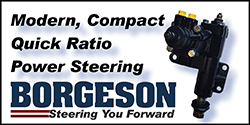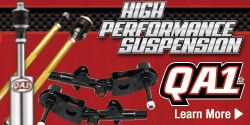dibbons
Well-Known Member
With hydraulic valve lifters and using a couple of adjustable pushrods, I understand I can take up the slack in the valve train with my adjustable rocker arms and measure for proper length pushrods-no problem.
What I don't understand, is this:
When I assemble the motor and place clay on the piston domes, if I had solid lifers I would just set zero lash and turn the engine over two spins. Then measure the clay-no problem.
However, since i have hydraulic lifters, I notice I can press the down on the pushrod end of the lifter with my finger. I guess there is a light spring inside that allows for a lot of down movement. When I assemble the cylinder heads to the short block and check for clearances with the clay (after setting zero valve lash again), When I turn the motor over a couple of spins, I imagine the resistance of the valve springs is going to push that lifter plunger down (maybe to the bottom of its travel?) and throw my piston to valve (and piston to cylinder head) readings way off.
Even if I had a couple of solid lifters for checking piston to valve clearance, I believe the effective length of the solid lifter differs from the hydraulic lifters, so that would also throw my readings off. I can't picture in my mind how to get around the fact that the hydraulic lifter plunger won't stay put in one place during my attempts at checking clearances.
Maybe I am over-thinking this procedure, but I can't afford to have things all bent up on the initial start-up, if you know what I mean. The motor is a small block 340 and I am using a custom hydraulic camshaft, Lunati hydraulic lifters, open chamber cylinder heads, and factory 273 adjustable rocker arms. Thank you for your advice/input.
What I don't understand, is this:
When I assemble the motor and place clay on the piston domes, if I had solid lifers I would just set zero lash and turn the engine over two spins. Then measure the clay-no problem.
However, since i have hydraulic lifters, I notice I can press the down on the pushrod end of the lifter with my finger. I guess there is a light spring inside that allows for a lot of down movement. When I assemble the cylinder heads to the short block and check for clearances with the clay (after setting zero valve lash again), When I turn the motor over a couple of spins, I imagine the resistance of the valve springs is going to push that lifter plunger down (maybe to the bottom of its travel?) and throw my piston to valve (and piston to cylinder head) readings way off.
Even if I had a couple of solid lifters for checking piston to valve clearance, I believe the effective length of the solid lifter differs from the hydraulic lifters, so that would also throw my readings off. I can't picture in my mind how to get around the fact that the hydraulic lifter plunger won't stay put in one place during my attempts at checking clearances.
Maybe I am over-thinking this procedure, but I can't afford to have things all bent up on the initial start-up, if you know what I mean. The motor is a small block 340 and I am using a custom hydraulic camshaft, Lunati hydraulic lifters, open chamber cylinder heads, and factory 273 adjustable rocker arms. Thank you for your advice/input.
















